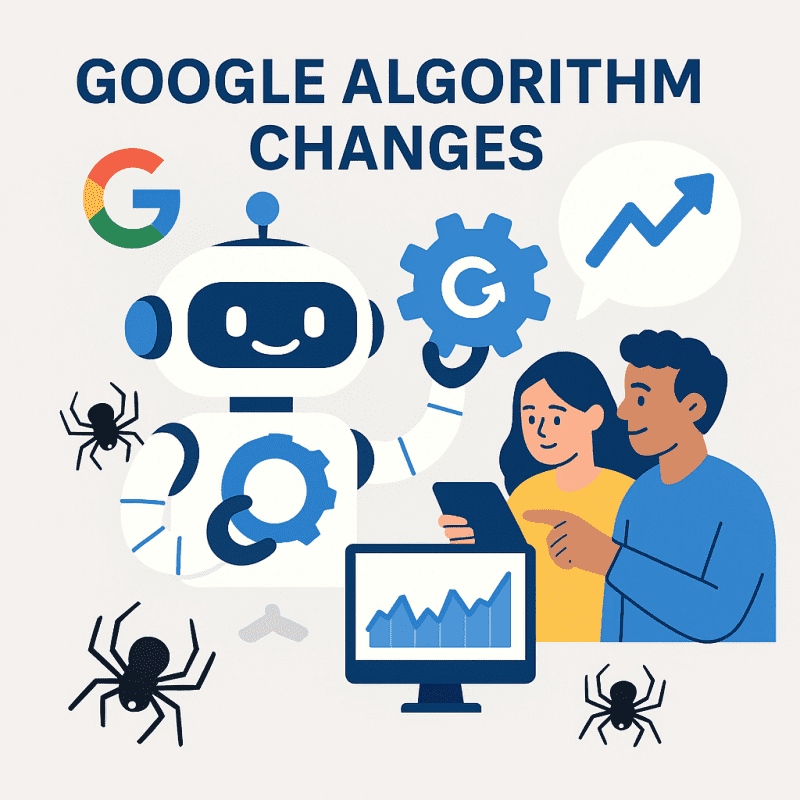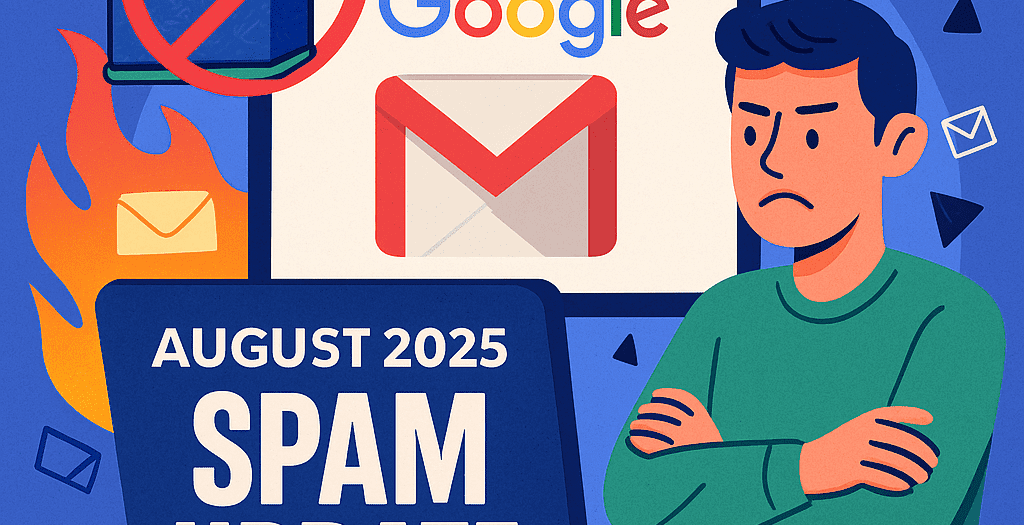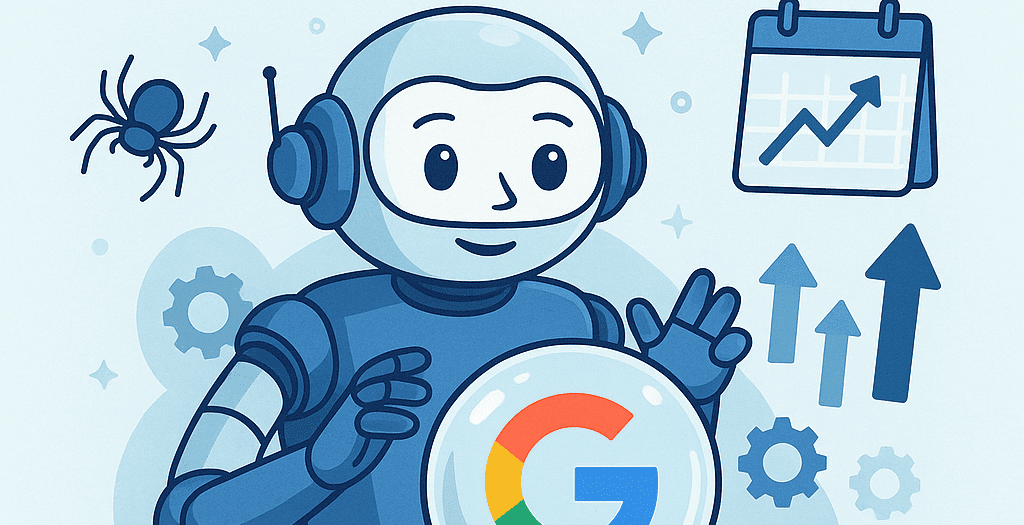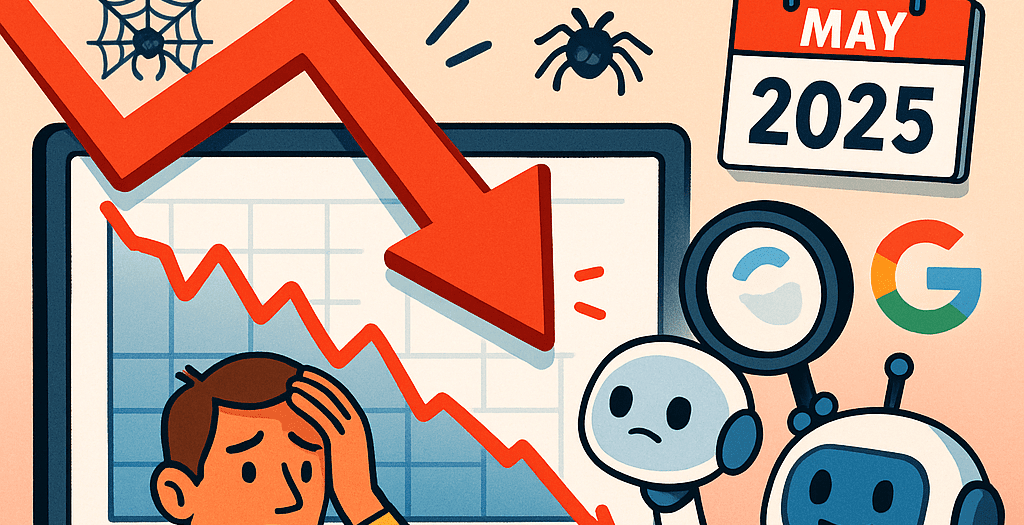Thousands of updates each year.
Google doesn’t just update its algorithm now and then – it tweaks, refines, and reshapes it constantly.
In fact, the search engine rolls out thousands of updates each year. Most are minor and go unnoticed, but every so often, a major change sends shockwaves through the SEO world – upending rankings, rewriting best practices, and forcing everyone to adapt fast.
If you’re serious about SEO, staying informed about these algorithm changes isn’t optional – it’s essential.
One big update can boost your visibility overnight… or tank your traffic if you’re not prepared. That’s why this section exists: to keep you in the loop and help you understand not just what changed, but why it matters.
From the infamous Panda and Penguin updates of the past to the latest core and spam updates shaking up the SERPs, Google’s algorithm has one goal: to deliver the best possible results to users.
That means rewarding helpful, relevant content – and cracking down on anything manipulative, outdated, or low quality.
This guide breaks down Google’s most impactful updates in plain English. We explain what each change targeted, how it affected rankings, and what practical steps you can take to stay on the right side of the algorithm going forward.
Whether you’re recovering from a sudden drop or simply future-proofing your strategy, understanding these shifts will give you a serious edge.
SEO is no longer about chasing tricks – it’s about staying adaptable. And the more you understand Google’s evolving priorities, the better you can align your content, technical setup, and optimisation efforts for long-term success.

📌 What Is a Google Algorithm Update?
At its core, Google’s algorithm is a complex system used to retrieve data from its search index and deliver the best possible results for a user’s query.
Over time, Google tweaks and improves this system to ensure that the search results remain relevant, helpful, and safe.
There are two main types of updates:
- 🔹 Broad core updates – major changes that affect how Google ranks websites overall
- 🔹 Targeted updates – focused updates that address specific aspects like spam, product reviews, or page experience
🕰️ Timeline of Key Google Core Updates
🔍 2011 – Panda Update
Targeted low-quality content and content farms, rewarding valuable, original information.
🧭 2012 – Penguin Update
Penalised manipulative link schemes and keyword stuffing.
🎯 2013 – Hummingbird Update
Introduced semantic search, understanding intent rather than matching keywords.
📱 2015 – Mobilegeddon
Prioritised mobile-responsive websites in mobile search—beginning of mobile-first indexing.
🚀 2015 – RankBrain
Machine learning-based update that improved interpretation of search intent.
🌐 2018 – Medic Update
Focused on E-E-A-T and impacted health and financial sites.
🔐 2019 – BERT Update
Improved understanding of language nuances and context through deep learning.
🧪 2021 – Page Experience Update
Introduced Core Web Vitals as a ranking factor.
💬 2021 – Product Reviews Update
Favoured in-depth, expert reviews over thin content.
🌍 2022 – Helpful Content Update
Rewarded people-first content and penalised SEO-only articles.
📅 2023–2024 – Core Updates
Multiple updates emphasising UX and content quality. Generic, low-authority sites were hit hardest.
⚠️ How These Updates Impact Your SEO
Google algorithm changes can make or break your visibility. You might notice:
- 📉 Drops or gains in keyword rankings
- 📊 Website traffic fluctuations
- 📬 Concern from clients or stakeholders
If impacted, take action:
- 🛠️ Audit content quality and UX
- 🔗 Remove spammy backlinks
- ✍️ Update older blog posts
- 🧑💼 Strengthen E-E-A-T
- 📱 Improve mobile speed and performance
Hit by a Google Update? Here’s How to Recover Fast
📈 Staying Ahead of the Curve
- 📢 Follow Google Search Central and @searchliaison
- 📚 Read blogs like Search Engine Roundtable, Moz, and The SEO Guide Book
- 🔍 Monitor traffic/rankings using GSC, Ahrefs, or Semrush
✅ The Bottom Line
SEO is about adaptation and consistency. By understanding how algorithms evolve, you protect your rankings and make better decisions.
“If your SEO collapses with every update, you’ve been building on sand.”
— David Roche, Founder of The SEO Guide Book
🔄 Final Thoughts
Google’s algorithm changes constantly – some minor, some game-changing. Knowing the history helps you anticipate future trends and prepare smartly. Always:
- 🧑💻 Create high-quality, expert-led content
- 🔁 Update older posts regularly
- 🧰 Run audits for technical health
- 💡 Follow E-E-A-T principles
- 🧭 Let data—not panic—guide your next steps
Stay diverse in your traffic sources, engage your community, and treat every update as a chance to improve – not a threat.
🔁 Recap and Clarify: Page-Specific FAQs
What is a Google algorithm update?
A change to Google’s core ranking system to improve quality and relevance of search results.
How often does Google update its algorithm?
Thousands of times yearly. Major core updates happen several times annually.
What is a core update?
A broad change that impacts how pages are ranked across all industries.
How do algorithm updates affect my website?
You might see traffic or ranking fluctuations depending on how well your site aligns with Google’s quality standards.
How can I tell if I’ve been impacted by an update?
Check Google Search Console or Analytics for sudden changes. Cross-reference with update timelines.
What should I do after a ranking drop?
Audit content and technical SEO. Improve E-E-A-T, remove thin pages, and enhance UX.
Can I “future-proof” my website from updates?
No site is immune, but consistent quality, performance, and good backlinks help.
Are AI and machine learning involved in these updates?
Yes—updates like RankBrain, BERT, and MUM use AI to better understand content and intent.
Should I change my SEO strategy after every update?
No—stick to quality and intent. Make tweaks only after analysing impact.
Where can I track upcoming and past Google updates?
Follow Google Search Central, Moz’s update history, and The SEO Guide Book.
🔁 Up Next!
SEO Industry News – The world of SEO never stands still. Stay ahead of the curve with breaking news, tool launches, and expert takes that keep your strategy sharp.
Video Recap – 🔄 Google Algorithm Changes — How to Adapt & Stay Visible in 2025
Every time Google updates its algorithm, rankings shift – sometimes overnight. In this video, I’ll show you how to understand what changed, how to respond fast, and how to protect your site for the future.
Google changes all the time – but good SEO is timeless. Stay focused on quality, trust, and user value, and no update will catch you off guard.


















